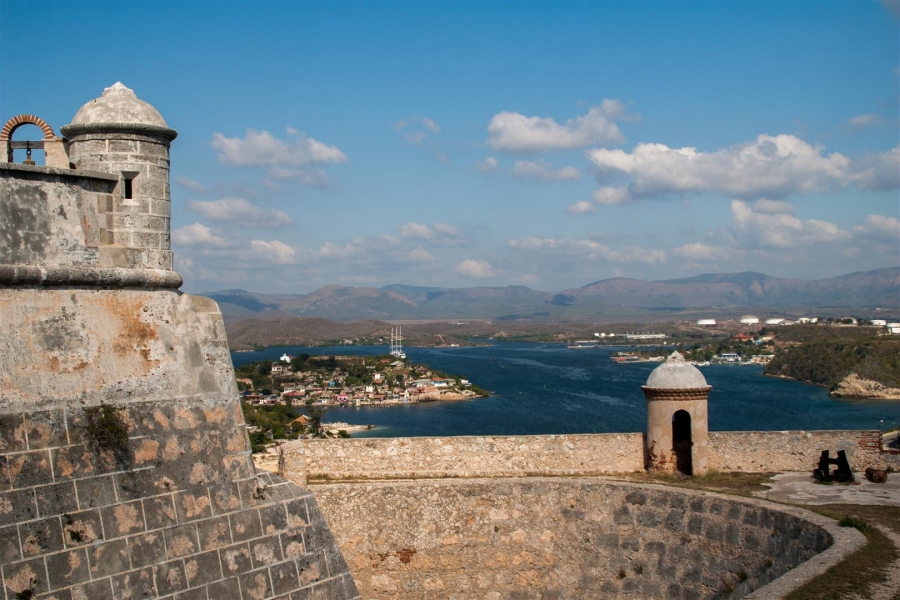The neighborhood known as Las Alturas de Simpson was cataloged by the playwright Federico Villoch as the Monte Sacro de Matanzas. Fela, the muse of the poet Gabriel de la Concepción Valdés, Plácido, had also lived in that place. Then it became a space for parties and dances and soon other inspirations would be reflected in history, once and for all, the hallmark of those places.
The protagonist of that feat was Miguel Failde, a musician from Matanzas who played the contrabass, the viola and even the cornetín, because of which, they say, he had bulging cheeks and a lower lip that had fallen from so much blowing. During some period of its life it was dedicated to give classes, in addition it interpreted the piano and composed several musical numbers.
Precisely “The heights of Simpson” was the name of the first Cuban danzón, one of the pieces of his authorship. They say that its premiere was held at the Club de Matanzas, currently the White Room, although several researchers agree in stating that the subject had been interpreted and rehearsed for a year, in the building known as La Quinta Luna.
About that birth, explained the own Failde: “Dancing for that time in Matanzas a dance of pictures that took the same name of danzón.?? This dance was formed up to twenty couples provided with arcs and bouquets of flowers.It was really a dance of figures and his movements were adjusted to the beat of the Habanera, which is the real compass that should be given to the danzón.The one who directed this dance of figures invited me to write an ad hoc music, because until then the couples executed the figures singing to live And when I wrote that music, the idea of the dance that today is called danzón occurred to me. ”
So he familiarized the rhythm through the presentations of the group he directed: The Miguel Failde Orchestra, also known as La Yucayo Gentil or La Irresistible, which spent five decades playing only music composed by Miguel, pieces that did not register in a only genre, of course.
According to the book “Miguel Failde, musical creator of danzón”, authored by Osvaldo Castillo Failde, nephew of the composer, his uncle wrote at least 144 danzones: “The heights of Simpson”, “The Japanese goddess”, “Cuba libre” , “I’m leaving for the other world”, “The mascavidrios”, “El mondonguito”, “Antón Pirulero”, “Schubert’s serenade”, “Figurín, merengue is over”, “Jota aragonesa”, among others.
The teacher Jorge Anckermann made an adaptation of this number, according to the original writings of Failde. Since then, musicians such as Antonio María Romeu, Cheo Belén Puig, Orestes López, Antonio Arcaño, Rodrigo Prats, Abelardito Valdés, Joseíto Valdés and Armando Valdés Torres defended that legacy.
At the close of the twenty-second Cubadanzón Festival 2013, this genre was named Intangible Heritage of the nation, although for years it has been considered our national dance, because as the researcher and writer Alejo Carpentier said, the danzón was a participant, as a musical event, of what event was manifested on the Island.
The challenges remain alive, while the great-great-grandson of Miguel Failde, currently directs the orchestra that bears his name, with which he revitalizes that rhythm in defense of new timbres, concepts, contemporary sonorities. “The danzón suffers a temporization in the 20th century, with José Urfé, who incorporates the son to montuno del danzón and creates El bombín de Barreto, which has been the first fusion in danzón, a moment of evolution. Now we have merged it with the timba and it turned out what we call the danzón of the XXI Century “.
El Danzón, will be for all times and forever, not only in Cuba, around the world.
EL DANZÓN, PARA TODAS LAS ÉPOCAS Y PARA SIEMPRE.
Danzón para todos los tiemposEl barrio conocido como Las Alturas de Simpson fue catalogado por el dramaturgo Federico Villoch como el Monte Sacro de Matanzas. En aquel lugar también había vivido Fela, la musa del poeta Gabriel de la Concepción Valdés, Plácido. Luego se transformó en un espacio de fiestas y bailes y pronto otras inspiraciones dejarían plasmado en la historia, de una vez y para siempre, el sello de aquellos parajes.
El protagonista de esa hazaña fue Miguel Failde, un músico matancero que tocaba el contrabajo, la viola y hasta el cornetín, a causa del cual, según cuentan, tenía los carillos abultados y el labio inferior caído de tanto soplar. Durante algún período de su vida se dedicó a dar clases, además interpretaba el piano y compuso varios números musicales.
Precisamente “Las alturas de Simpson” fue el nombre del primer danzón cubano, una de las piezas de su autoría. Dicen que su estreno se realizó en el Club de Matanzas, actualmente la Sala White, aunque varios investigadores coinciden en plantear que el tema se había interpretado y ensayado durante un año, en el edificio conocido como La Quinta Luna.
Sobre aquel nacimiento, explicó el propio Failde: “Se bailaba por aquel tiempo en Matanzas un baile de cuadros que llevaba el mismo nombre de danzón. Este baile lo formaban hasta veinte parejas provistas de arcos y ramos de flores. Era realmente un baile de figuras y sus movimientos se ajustaban al compás de la Habanera, que es el compás verdadero que debe dársele al danzón. El que dirigía este baile de figuras me invitó a que escribiera una música ad hoc, pues hasta entonces las parejas ejecutaban las figuras cantando a viva voz. Y al escribir esa música se me ocurrió la idea del baile que hoy se llama danzón”.
Así familiarizó el ritmo a través de las presentaciones de la agrupación que dirigía: La Orquesta de Miguel Failde, también conocida como La Yucayo Gentil o La Irresistible, la cual estuvo cinco décadas tocando solamente música compuesta por Miguel, piezas que no se inscribían en un único género, por supuesto.
Según el libro “Miguel Failde, creador musical del danzón”, de la autoría de Osvaldo Castillo Failde, sobrino del compositor, su tío escribió al menos 144 danzones: “Las alturas de Simpson”, “La diosa japonesa”, “Cuba libre”, “Yo me voy para el otro mundo”, “Los mascavidrios”, “El mondonguito”, “Antón Pirulero”, “La serenata de Schubert”, “Figurín, se acabó el merengue”, “Jota aragonesa”, entre otros.
El maestro Jorge Anckermann realizó una adaptación de este número, según los escritos originales de Failde. Desde entonces, defendieron ese legado músicos de la talla de Antonio María Romeu, Cheo Belén Puig, Orestes López, Antonio Arcaño, Rodrigo Prats, Abelardito Valdés, Joseíto Valdés y Armando Valdés Torres.
En la clausura del vigésimo segundo Festival Cubadanzón 2013, este género fue nombrado Patrimonio Inmaterial de la nación, aunque desde hace años es considerado nuestro baile nacional, ya que como dijera el investigador y escritor Alejo Carpentier, el danzón fue partícipe, como hecho musical, de cuanto acontecimiento se manifestó en la Isla.
Los retos se mantienen vivos, mientras el tataranieto de Miguel Failde, dirige actualmente la orquesta que lleva su nombre, con la cual revitaliza ese ritmo en defensa de nuevos timbres, conceptos, sonoridades contemporáneas. “El danzón sufre una contemporización en el siglo XX, con José Urfé, quien incorpora el son al montuno del danzón y crea El bombín de Barreto, que viene siendo la primera fusión en el danzón, es un momento de evolución. Ahora lo hemos fusionado con la timba y resultó lo que llamamos el danzón del Siglo XXI”.
El Danzón, sera para todas las épocas y para siempre, no solo en Cuba, alrededor del Mundo.
Agencies/Rad.Encyclopedia/Laura Barrera Jerez/Internet Photos/Arnoldo Varona/ TheCubanHistory.com
THE CUBAN HISTORY, HOLLYWOOD.










